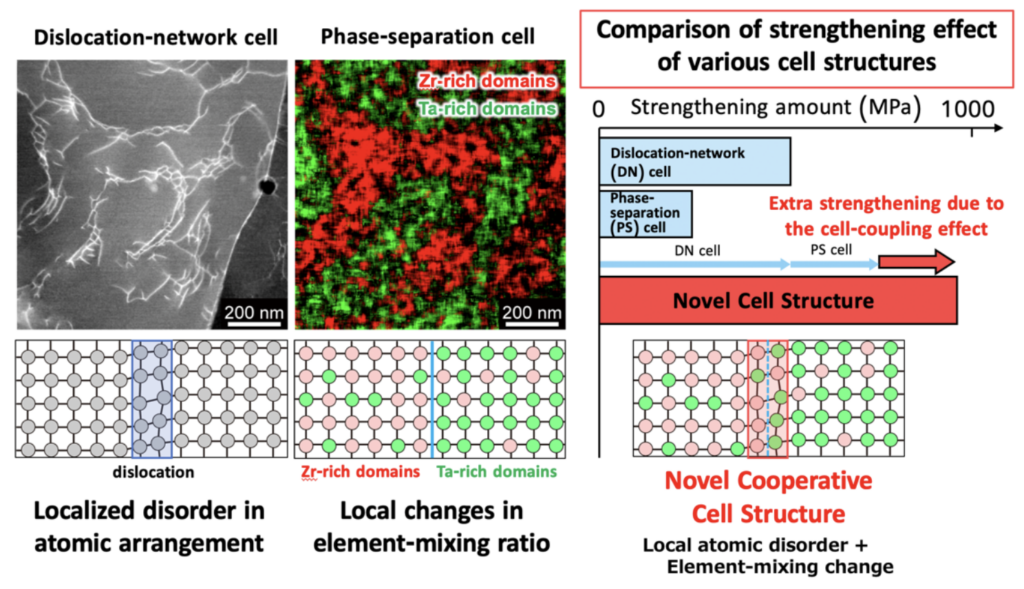NEWS
Research
Prof. Abe’s group discovered a novel cellular structure that enhances the strength of high-entropy alloys
2025.03.18Undergraduate Graduate
Discovery of a novel cellular structure that enhances the strength of high-entropy alloys: new development in 3D printing materials design
High entropy alloys (HEAs) are attracting attention as the next generation structural materials that exhibit excellent mechanical properties by combining different metallic elements in almost equal proportions. In particular, HEAs such as Ti-Zr-Nb-Mo-Ta, which is composed of high melting point elements with low bio- toxicity, are expected to be used in a variety of fields including medicine, aerospace and the energy industry. However, because these alloys contain multiple high-melting point elements, it is difficult to produce a uniform material using conventional solidification methods, and there are limits to performance improvements.
Now, a research group led by Project Researcher Han Chen, Assistant Professor Daisuke Egusa and Professor Eiji Abe at the Graduate School of Engineering, The University of Tokyo, and a research group led by Professor Takayoshi Nakano at the Graduate School of Engineering, Osaka University, have used an advanced 3D printing method, which is attracting worldwide interest as a cutting-edge technology, to produce Ti-Zr-Nb-Mo-Ta HEA and discovered that the remarkable strengthening effect it exhibits is due to a novel cell structure at the submicron scale. The present results provide new guidelines for the design of metallic materials and are expected to be applied in fields where durability and strength are particularly important. For example, in the medical field it will be possible to create implant materials that combine strength and durability, and in the aerospace field it will be possible to create parts that can withstand harsh environments. In addition, the precise shape control enabled by 3D printing will make the production of high-performance metallic materials more efficient and flexible, leading to reductions in manufacturing costs and energy consumption.
Related paper: https://www.sciencedirect.com/science/article/pii/S2214860425001010

